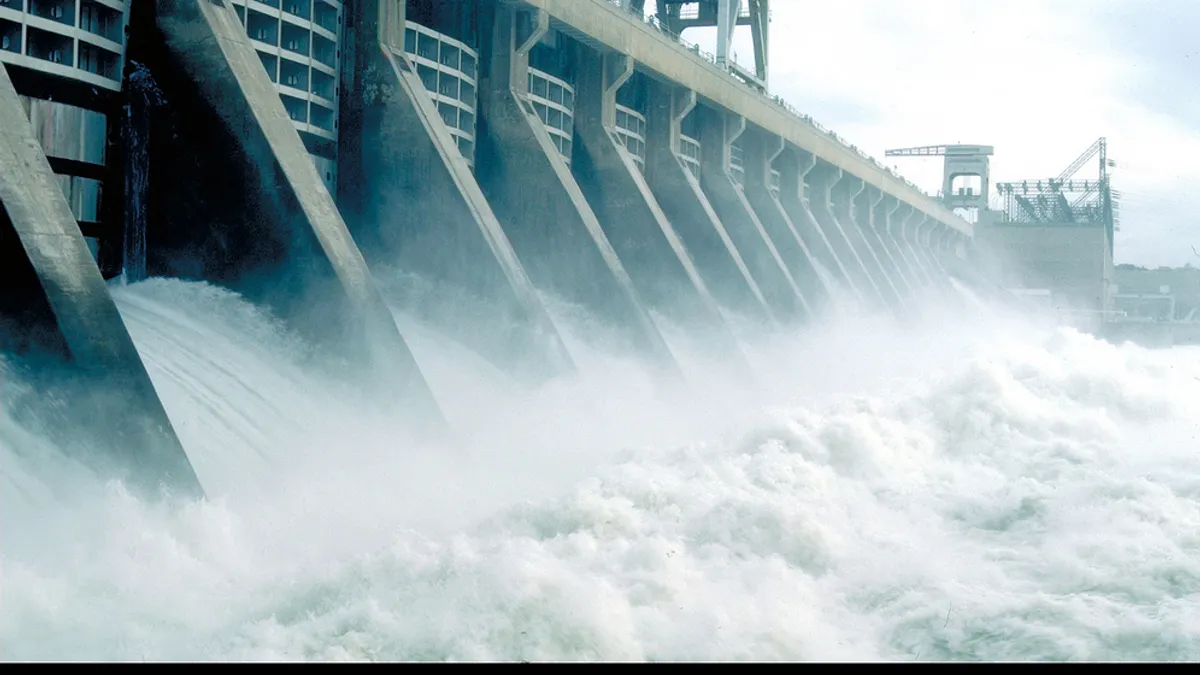Dive Brief:
- The storm-damaged spillway at the Oroville dam in northern California has taken more than 800 MW of carbon-free energy out of the market, likely forcing the state to turn to gas generators to make up the shortfall.
- The dam can generate power for 600,000 homes, Bloomberg analysts report, but it will remain offline until officials say the structure has been fully repaired. A need for more gas generation comes as the state is dealing with constrained supplies due to the Aliso Canyon storage leak, as well.
- Almost 200,000 people were evacuated from the area below the Oroville dam, over concerns a 30-foot wall of water would wash through communities in case of a catastrophic failure. The mandatory evacuation has since been lifted, as some repairs have been made.
Dive Insight:
Evacuations in Northern California transfixed a national audience and terrified local residents who scrambled to get out of harm's way. But as the panic alleviates and people return home, Bloomberg points out one impact may take longer to address.
“Gas generation probably needs to pick up the slack from what you lose at the Oroville Dam,” Bloomberg New Energy Finance analyst Het Shah told the news source. The lost capacity is roughly equivalent to two typically-sized natural gas generators.
The Oroville reservoir is currently at 92% of capacity, after officials drained water in advance of more rains, but it wasn't so long ago that California's hydropower reserves were dealing with a serious drought. A 2015 study estimated that lower hydro generation over three years cost California ratepayers more than $1 billion as the state ramped up gas generation.
Turning to more gas to replace the Oroville capacity could exacerbate another generation issue in the state. A leak at Southern California Gas' Aliso Canyon storage facility sent the state scrambling last year to ensure it had adequate supplies.
Now, the California Public Utilities Commission has opened a two-phase investigation to consider the future of the Aliso Canyon gas storage facility, and could shut it down altogether.
A leak at the facility was discovered in 2015, forcing the evacuation of nearly 6,000 residents and leading to emergency orders to help maintain power reliability in the region. Last year SoCal Gas agreed to pay $4.3 million under a settlement with the District Attorney's Office for Los Angeles County.















